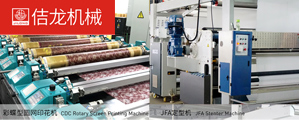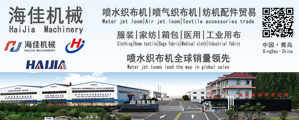The status quo of textile enterprises going global amid the new normal of COVID-19
Feb 07, 2021 | by Zhao Xinhua

The pandemic is still spreading globally, and international business exchanges and the circulation of goods are affected to some extent. According to the “Overview of China’s Overseas Investment in the First Three Quarters of 2020” recently released by the EY China, in the first three quarters of 2020, the overseas investment of Chinese companies continued to decline. The total overseas M&A was USD 24.4 billion, a year-on-year decrease of 50.6%, which was the lowest in the same period in the past 10 years. What is the status quo of Chinese textile enterprises going global amid the new normal of COVID-19?
Africa: Risks are still in control
According to incomplete statistics, as of the end of 2019, the stock of foreign investment in China’s textile industry exceeded USD 10 billion. Overseas investments are distributed in more than 100 countries and regions, and the annual sales revenue exceeds USD 10 billion. Africa, with its advantages in resources, labor, policies and consumption potential, has become a key area for Chinese textile companies to deploy overseas.
Faced with the continuous spread of the pandemic since 2020, the exports and employment of the African textile industry have been affected, and Chinese textile companies in Africa were inevitably affected.
Jiangsu Sunshine Group invested in a wool textile dyeing project in Ethiopia in 2016 and established a wholly-owned subsidiary Sunshine Ethiopia Wool Textile Dyeing Co., Ltd. As of the end of 2019, it has invested 469 million yuan. Jiangsu Sunshine Group’s 2020 semi-annual report shows that the project has been officially produced in the first half of 2020, but due to the pandemic and other reasons, production and operation have been affected to a certain extent.
Jiangsu Sunshine Group also pointed out that differences in the legal environment, economic policies, market situation, culture, language, and customs at home and abroad have brought certain difficulties to the operation and management of the Ethiopian company. Changes in the local economic situation and changes in related economic policies may adversely affect the future business conditions of the Ethiopian company.
In addition to enterprises, some industrial parks in Ethiopia were shut down in 2020. As the assistant to the general manager of Linde Textile Co., Ltd., Liao Hongying works in the Eastern Industrial Park of Ethiopia. Looking back on the past 2020, “The pandemic has some impact on the business. In March last year, the company received notifications from customers in the United States and the United Kingdom that some orders have been delayed, and logistics has stagnated for some time, but the overall impact is still within acceptable limits.” she said.
Southeast Asia: Affected, both pros and cons
The outbreak of the pandemic has slowed the development of the textile industry in Southeast Asia. The global retail industry is weak in many countries, the physical stores in Europe and the United States have closed, and the sales volume of textiles and clothing has fallen sharply. The development of the textile and clothing industry in Southeast Asia is in a difficult situation. So, what changes happened to the development of Chinese textile companies in Southeast Asia in 2020?
Shenzhou International Group Holdings Limited built a fabric production base in Vietnam as early as 2013 to better meet the orders and trade needs of major customers. As of the end of 2018, the Vietnam Deli fabric factory has been able to supply 45% of the group’s fabrics. The company’s recent financial report shows that in 2020, the Vietnam factory’s production capacity has reached 300 tons/day, which is almost the same as that of Ningbo Beilun fabric factory at its headquarters.
Shenzhou International pointed out in the financial report that Vietnam’s fabric factories will provide effective supply for Shenzhou International’s downstream production in 2021. Under the volatile trading environment, the layout of overseas production capacity makes the company’s delivery capacity more stable. On the other hand, in the context of increasing uncertainty in the global trading environment, overseas factories can flexibly deploy production for customers and are more resistant to pressure. The capacity of Shenzhou International’s factory in Vietnam is sufficient to accept the current total export orders to the United States, which can effectively hedge the impact of Sino-US trade friction.
It is understood that under the impact of the global pandemic, although Shenzhou International’s major cooperative brands have suffered a decline in performance, the company still maintains business stability. In the first half of 2020, the company’s revenue was 10.234 billion yuan, a slight decrease of 0.4% year-on-year.
Shaoxing Mulinsen Knitting Co., Ltd. is mainly engaged in various types of rayon products, and its products are mainly exported to Southeast Asia. It also has a dyeing and printing factory and a bonded warehouse in Indonesia. Huang Yong, general manager of the company, introduced that starting from September 2020, the company’s operating income has turned from negative to positive. For the whole of 2020, the company’s annual sales increased by about 15% year-on-year.
Chinese textile enterprises going global is still the general trend
Chinese enterprises proactively “going global” can broaden the global market for the development of their goods, services and technology. They may also invest in and work with leading overseas players so as to advance faster along the global value chain.
China’s economy rebounds fast with companies gaining momentum. Benefitted from effective control measures against COVID-19, China’s economy recovered markedly in 2020 Q2 and Q3. The country achieved a V-shape rebound largely driven by a quick return of industrial activities, which in turn boosted exports and stabilized employment. This has helped companies stabilize their domestic businesses and ease some financial pressure. When looking for outbound investment opportunities, Chinese companies may focus on targets that are more synergistic with the domestic real economy.








